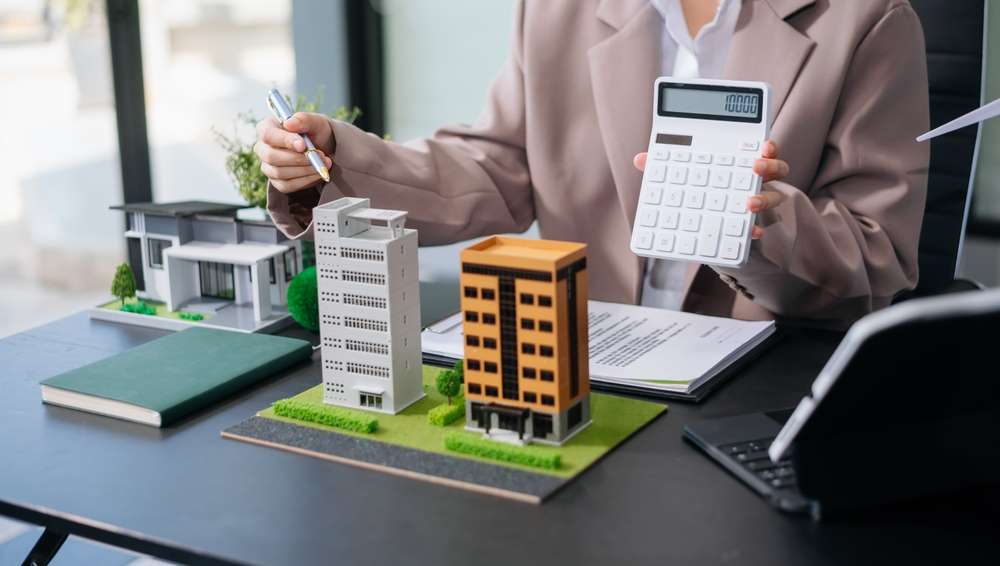Reimagining Office Spaces: The Rise of Flex-Hybrid Buildings
In the ever-evolving landscape of commercial real estate, a new trend is reshaping how we think about office spaces. Flex-hybrid buildings are emerging as a innovative solution to the changing needs of businesses and workers in the post-pandemic world. This concept blends traditional office layouts with adaptable spaces, creating environments that can seamlessly transition between various uses. As companies grapple with the future of work, these versatile structures are gaining traction, promising to revolutionize the commercial property market.

The roots of this trend can be traced back to the rise of co-working spaces in the early 2010s. These shared workspaces demonstrated the benefits of flexible, community-oriented environments. As the idea gained traction, forward-thinking developers and architects began to incorporate elements of this flexibility into conventional office buildings.
Key Features of Flex-Hybrid Spaces
Flex-hybrid buildings are characterized by their adaptability and multifunctionality. These structures are designed to accommodate a wide range of uses within a single property. Some key features include:
-
Modular layouts: Spaces that can be easily reconfigured to suit different needs, from private offices to collaborative areas.
-
Technology integration: Advanced systems for seamless connectivity, supporting both in-person and remote work.
-
Wellness-focused amenities: Incorporation of green spaces, fitness centers, and areas dedicated to relaxation and mental health.
-
Mixed-use elements: Integration of retail, residential, or hospitality components within the same building.
-
Sustainable design: Emphasis on energy efficiency and environmentally friendly materials.
The Financial Perspective
From an investment standpoint, flex-hybrid buildings present an intriguing opportunity. While initial development costs may be higher due to the need for versatile infrastructure, these properties offer potential for higher returns in the long run. The ability to attract a diverse tenant base and adapt to market changes reduces vacancy risks and can lead to more stable income streams.
According to recent market analysis, flex-hybrid buildings are commanding premium rents compared to traditional office spaces. In major urban centers, these properties are seeing rental rates up to 15-20% higher than conventional offices. This premium is attributed to the added value tenants perceive in the flexibility and amenities offered.
Challenges and Considerations
While the concept of flex-hybrid buildings is promising, it’s not without challenges. Developers and investors must carefully consider several factors:
-
Higher initial costs: The versatile nature of these buildings often requires more complex design and construction processes.
-
Regulatory hurdles: Zoning laws and building codes may not yet be fully aligned with this new concept, potentially causing delays or limitations.
-
Market uncertainty: As the concept is relatively new, there’s limited historical data to predict long-term performance.
-
Management complexity: Operating a flex-hybrid building requires a more hands-on approach and potentially specialized skills.
-
Tenant expectations: Balancing the diverse needs of various tenants within a single property can be challenging.
Impact on Urban Planning and Development
The rise of flex-hybrid buildings is not just changing individual properties; it’s influencing broader urban planning strategies. Cities are beginning to recognize the potential of these versatile structures to revitalize neighborhoods and create more dynamic urban environments.
Urban planners are increasingly incorporating flex-hybrid concepts into their development strategies. This approach allows for more efficient use of land, potentially reducing urban sprawl and creating more vibrant, mixed-use neighborhoods. It also aligns with the growing emphasis on creating 15-minute cities, where residents can access most of their daily needs within a short walk or bike ride.
The Future of Flex-Hybrid Real Estate
As we look to the future, the flex-hybrid model is likely to evolve further. Emerging technologies, such as IoT (Internet of Things) and AI-driven space management systems, will enhance the adaptability of these buildings. We may see the development of entire flex-hybrid districts, where multiple buildings work in concert to create dynamic, responsive urban environments.
The concept is also expected to expand beyond office spaces. Retail centers, hospitality properties, and even residential buildings could incorporate flex-hybrid elements, blurring the lines between traditional real estate categories.
Implications for Investors and Developers
For real estate investors and developers, flex-hybrid buildings represent both an opportunity and a challenge. Those who can successfully navigate this new terrain may find themselves at the forefront of a major shift in commercial real estate. However, it requires a willingness to innovate, take calculated risks, and think long-term.
Key considerations for those looking to enter this market include:
-
Location strategy: Identifying areas where flex-hybrid buildings will be in high demand.
-
Partnerships: Collaborating with tech companies and innovative design firms to create cutting-edge spaces.
-
Sustainability focus: Incorporating green building practices to meet growing environmental concerns and regulations.
-
Tenant mix strategy: Developing a balanced approach to attract diverse, complementary tenants.
-
Adaptable financing models: Working with lenders to create financing structures that account for the unique nature of these properties.
As the real estate market continues to evolve, flex-hybrid buildings stand out as a bold reimagining of commercial spaces. By offering versatility, sustainability, and a focus on user experience, these innovative structures are poised to play a significant role in shaping the future of our urban landscapes. For investors, developers, and urban planners alike, understanding and embracing this trend could be key to success in the coming decades of real estate development.





